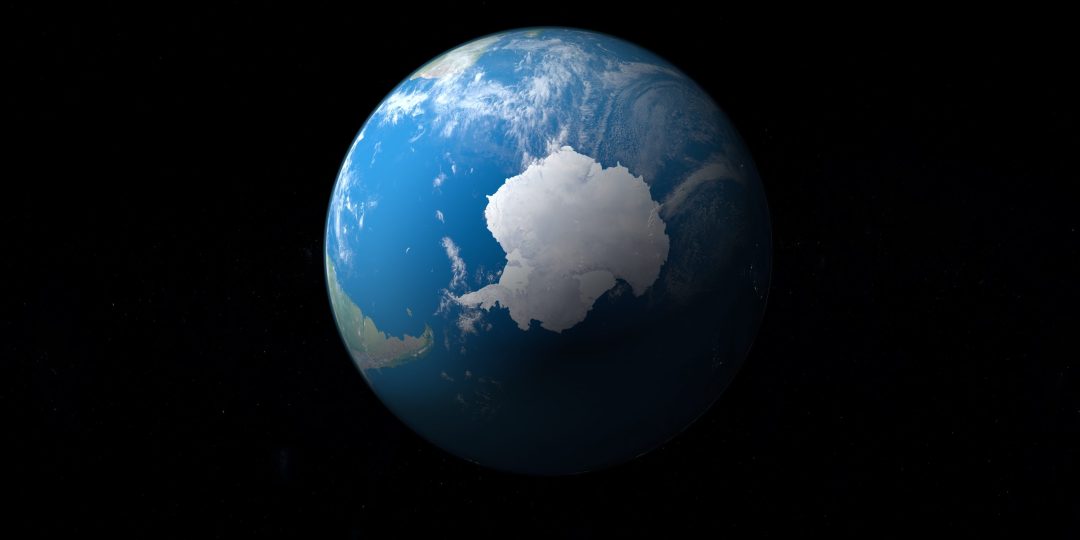
The ozone hole is back in the news. Once routinely touted in the popular media as a conspicuous piece of evidence for anthropogenic atmospheric change, the ozone hole over Antarctica has faded from the headlines in recent years. In particular, links between the ozone hole over the South Pole — the region of the planet most remote from the industrialized Northern Hemisphere — and volcanism in southern South America and Antarctica have clouded the connection between the hole and human activity. The hole also grows and shrinks seasonally, adding more complexity. Moreover, active periods of aurora borealis and aurora australis can cause significant erosion to the ozone layer.
The recent eruption of the Hunga Tonga volcano in the South Pacific appears to have contributed mightily to the size of the ozone hole for years to come, thanks to the massive amounts of water vapor the event ejected into the upper atmosphere. According to Antje Inness, Copernicus Atmosphere Monitoring Service senior scientist, “The water vapor could have led to the heightened formation of polar stratospheric clouds, where chlorofluorocarbons (CFCs) can react and accelerate ozone depletion.”
Recent observations from the European Space Agency confirm that the ozone hole, which achieves an annual maximum between mid-September and mid-October, last month grew to its second-largest expanse ever, roughly 10 million square miles, or more than three times the size of Brazil. Only the 2000 ozone hole, which reached an estimated 11 million square miles, was larger.
Despite this, the overall average size of the ozone hole is said to be shrinking, allegedly thanks to the banning of ozone-depleting substances by the 1987 Montreal Protocol. Claus Zehner, the European Space Agency’s mission manager for Copernicus Sentinel-5P, expressed confidence to Space.com that, thanks to the Montreal Protocol, the ozone hole will continue to shrink until “reach[ing] its normal state again by around 2050.”
While the Montreal Protocol and its ban on many CFCs and other ozone-depleting substances is widely regarded as the most successful of all international environmental agreements, scientific and public debate over the matter of anthropogenic ozone depletion has been skewed by hyperbolic rhetoric that tends to misrepresent certain indisputable facts, chief among them being that, technically, there is no literal ozone “hole.” The term conjures up images of a ruptured atmosphere and a hapless planet exposed to deadly cosmic rays cooking humankind with lethal levels of radiation. But in reality, the ozone “hole” is an area of seasonal ozone depletion better characterized as a “depression.” Moreover, ozone depletion is a separate issue from climate change, even though they are often conflated in both popular perception and the media.
In general, climate alarmists lament that the ozone depletion elicited far more public sympathy than climate change per se. As sociologist Sheldon Ungar observed, “The ozone threat encouraged the acquisition of knowledge because it was allied and resonated with easy-to-understand bridging metaphors derived from the popular culture. It also engendered a ‘hot crisis.’ That is, it provided a sense of immediate and concrete risk with everyday relevance. Climate change fails at both of these criteria and remains in a public limbo.” Elsewhere, Ungar explained in more detail:
The signal advantage of the ozone hole is that it can be encapsulated in a simple, direct, and widely familiar “penetration” metaphor. Stated succinctly, the hole leads to the increased bombardment of the earth by lethal rays. The idea of rays penetrating a damaged “shield” meshes nicely with abiding and resonant cultural motifs, including “Hollywood affinities” ranging from the shields on the Starship Enterprise to Star Wars. That the threat can be linked with Darth Vader means that it is encompassed in common-sense understandings that are deeply ingrained and widely shared…. The importance of mundane metaphors that ordinary people are able to think with can be seen in a comparison of the ozone hole with climate change. Weigh up the fundamental metaphor used to frame each problem. It is apparent to anyone that a “hole” is an aberration, something that a protective shield should not have. The greenhouse effect, in contrast, seems like a benign and essential natural phenomenon.
Ungar’s contention, that a lack of persuasive “bridging metaphors” to bridge the gap between scientists and the nescient masses is a PR nightmare for the climate movement, is indicative of the mindset of many in the movement, namely, that the science is allegedly so urgent that it needs to be marketed with the help of misleading and sensationalist metaphors. Yet it also explains why the “ozone hole” has been largely dropped from public discourse: having served its metaphoric purpose (the ushering in of supranational environmental accords), it may be allowed to simmer unremarked in the outer darkness of the upper stratosphere.
And, according to Ungar, we have Star Trek to thank for it.



